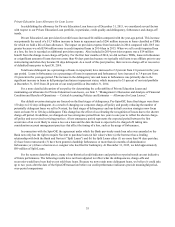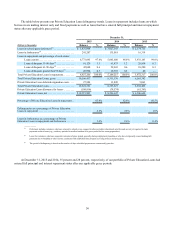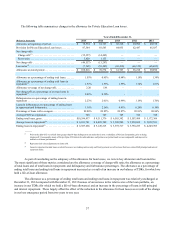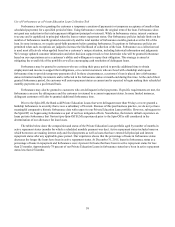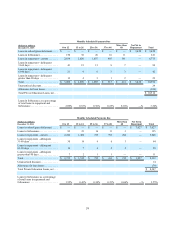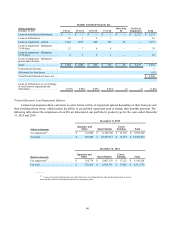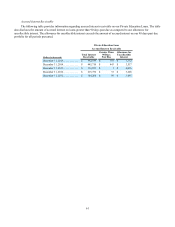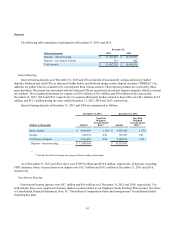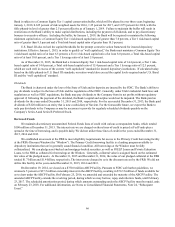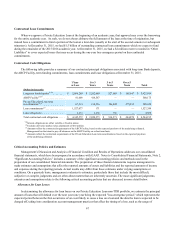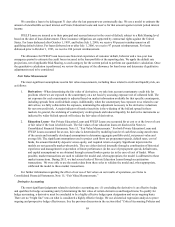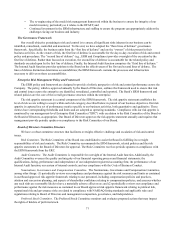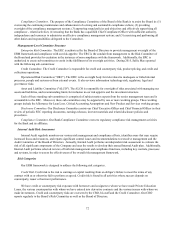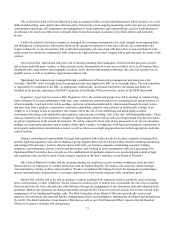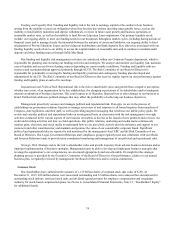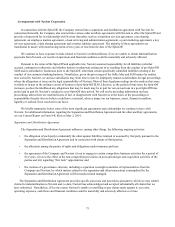Sallie Mae 2015 Annual Report Download - page 67
Download and view the complete annual report
Please find page 67 of the 2015 Sallie Mae annual report below. You can navigate through the pages in the report by either clicking on the pages listed below, or by using the keyword search tool below to find specific information within the annual report.
65
Regulatory Capital
The Bank is subject to various regulatory capital requirements administered by federal and state banking authorities.
Failure to meet minimum capital requirements can initiate certain mandatory and possibly additional discretionary actions by
regulators that, if undertaken, could have a direct material adverse effect on our business, results of operations and financial
condition. Under U.S. Basel III and the regulatory framework for prompt corrective action, the Bank must meet specific capital
standards that involve quantitative measures of its assets, liabilities and certain off-balance sheet items as calculated under
regulatory accounting practices. The Bank’s capital amounts and its classification under the prompt corrective action framework
are also subject to qualitative judgments by the regulators about components of capital, risk weightings and other factors.
“Well capitalized” regulatory requirements are the quantitative measures established by regulation to ensure capital
adequacy. To qualify as “well capitalized,” the Bank must maintain minimum amounts and ratios (set forth in the table below)
of Common Equity Tier 1, Tier 1 and Total capital to risk-weighted assets and of Tier 1 capital to average assets. The following
capital amounts and ratios are based upon the Bank's assets.
Actual "Well Capitalized"
Regulatory Requirements
(Dollars in thousands) Amount Ratio Amount Ratio
As of December 31, 2015:
Common Equity Tier 1 Capital (to Risk-Weighted
Assets) . . . . . . . . . . . . . . . . . . . . . . . . . . . . . . . . . . . . $ 1,734,315 14.4% $ 781,638 > 6.5%
Tier 1 Capital (to Risk-Weighted Assets). . . . . . . . . . $ 1,734,315 14.4% $ 962,017 > 8.0%
Total Capital (to Risk-Weighted Assets). . . . . . . . . . $ 1,848,528 15.4% $ 1,202,521 > 10.0%
Tier 1 Capital (to Average Assets). . . . . . . . . . . . . . . $ 1,734,315 12.3% $ 704,979 > 5.0%
As of December 31, 2014:
Tier 1 Capital (to Risk-Weighted Assets). . . . . . . . . . $ 1,413,988 15.0% $ 565,148 > 6.0%
Total Capital (to Risk-Weighted Assets). . . . . . . . . . $ 1,497,830 15.9% $ 941,913 > 10.0%
Tier 1 Capital (to Average Assets). . . . . . . . . . . . . . . $ 1,413,988 11.5% $ 614,709 > 5.0%
Capital Management
The Bank seeks to remain “well capitalized” at all times with sufficient capital to support asset growth, operating needs,
unexpected credit risks and to protect the interests of depositors and the DIF. The Bank is required by its regulators, the UDFI
and the FDIC, to comply with mandated capital ratios. We intend to maintain levels of capital at the Bank that significantly
exceed the levels of capital necessary to be considered “well capitalized” by the FDIC. The Company is a source of strength
for the Bank and will provide additional capital if necessary. The Board of Directors and management periodically evaluate the
quality of assets, the stability of earnings, and the adequacy of the allowance for loan losses for the Bank. We currently believe
that current and projected capital levels are appropriate for 2016. As our balance sheet continues to grow in 2016, these ratios
will decline but will remain significantly in excess of the capital levels required to be considered “well capitalized” by our
regulators. We do not plan to pay dividends on our common stock. We do not intend to initiate share repurchase programs as a
means to return capital to shareholders. We only expect to repurchase common stock acquired in connection with taxes
withheld in connection with award exercises and vesting under our employee stock-based compensation plans. Our Board of
Directors will periodically reconsider these matters.
As of January 1, 2015, the Bank was required to comply with U.S. Basel III, which is aimed at increasing both the
quantity and quality of regulatory capital and, among other things, establishes Common Equity Tier 1 as a new tier of capital
and modifies methods for calculating risk-weighted assets. Certain aspects of U.S. Basel III, including new deductions from
and adjustments to regulatory capital and a new capital conservation buffer, are being phased in over several years. The Bank’s
Capital Policy requires management to monitor the new capital standards. The Bank is subject to the following minimum
capital ratios under U.S. Basel III: a Common Equity Tier 1 risk-based capital ratio of 4.5 percent, a Tier 1 risk-based capital
ratio of 6.0 percent, a Total risk-based capital ratio of 8.0 percent, and a Tier 1 leverage ratio of 4.0 percent. In addition, the


